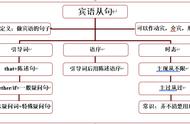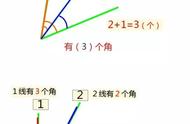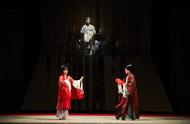
非谓语动词
非谓语动词指不能单独作谓语,但仍保留动词的某些特征的动词形式。非谓语动词包括不定式、动词-ing形式和过去分词。它们没有人称和数的变化,但可以有自己的逻辑主语、宾语、状语等。
一、非谓语动词的各种形式

二、非谓语动词在句中的一些用法
1. 动词-ing形式和不定式作主语和宾语
★作主语
通常,动词-ing形式着重过程,不定式着重结果。但有时二者有下列不同之处:
1)动词-ing形式的逻辑主语可能泛指人们,而不定式的逻辑主语则常是句子中的名词或代词。
2)动词-ing形式可表示一般或抽象的多次性的动作,而不定式则往往表示具体的或一次性的动作。
★作宾语
1)有些动词后常跟不定式作宾语。这类动词常见的有agree, aim, arrange, choose, decide, demand, desire, determine, expect, fail, intend, learn, plan, manage, offer, prepare, pretend, promise, refuse, threaten, wish等。
2)有些动词后常跟动词-ing形式作宾语。这类动词常见的有admit, dislike, appreciate, avoid, enjoy, bear, escape, stand, deny, consider, mind, miss, finish, resist, imagine, risk, practice, suggest等。
2. 非谓语动词作定语
1)不定式作定语
a. 作定语的不定式与它所修饰的名词或代词在逻辑上可能是主谓关系,也可能是动宾关系。如:
The next train to arrive was from New York.
It was a game to remember.
b. 名词前有only, last, next,序数词或形容词的最高级时,其后常用不定式作定语。如:
Rita was the only person to complain.
He was the first man to fly across the Atlantic.
Alex is the best man to do the job.
c. 有些名词的同根动词后常跟不定式,因而这些名词后也常跟不定式作定语。如:
Their offer to assist in the work was not taken seriously.
(比较:They offered to assist in the work.)
2)动词-ing形式作定语可表示正在进行的动作,也可表示经常发生的或短暂的动作以及经常存在的状态。如:
The woman sending her children to school is my history teacher.
A little child learning to walk often falls.
3)过去分词作定语常表示被动或已经发生的动作。如:
We’ve met the doctors sent to work here by the city hospital.

3. 非谓语动词作表语
1)不定式作表语,常用来说明主语的具体内容。如:
His ambition is to become a successful scientist.
2)动词-ing形式作表语,可用于说明主语的内容,而且可以转换到句首作主语,常指抽象的行为;也可表示主语的性质或特征。如:
My hobby is collecting stamps. = Collecting stamps is my hobby.
The novel is very boring.
3)过去分词作表语,常表示主语的状态。如:
I was delighted to receive your gifts.
4. 非谓语动词作状语
1)不定式作状语,常表示目的、原因、结果等。不定式作结果状语时,常用于“only 不定式”结构,表示未曾预料到的或令人不快的结果。如:
A friend of mine came to see me tonight.
I jumped with joy to hear it.
Alan lifted a rock only to drop it on his own feet.
2)动词-ing形式或过去分词作状语时,可以表示时间、原因、结果、条件、让步、方式、伴随情况等,其前可加连词while, when, once, if, unless等。如:
Crossing the street, he was knocked down by a car.
Frightened by the noise outside, the little girl dared not sleep in her bedroom.
He fell off the bike, breaking his left leg.
Seen through the eyes of a young friend, Einstein was a simple, modest and ordinary man.
A group of children were sitting around the teahcer, playing games.
When heated, ice will be changed into water.
5. 非谓语动词作补语
1)动词-ing形式表示正在进行的活动或反复的动作,而不定式则表示整个活动或事件的全过程。如:
I see him passing my house every day.
I asked George to convey my best wishes to his mother.
2)感官动词和使役动词后常接省略to的不定式作宾语补足语,但用于被动语态时,需把to补出来。如:
Someone saw Mary enter the building about the time the crime was committed.
Mary was seen to enter the building about the time the crime was committed.
另外,感官动词后也可接动词-ing形式作补语,表示动作正在进行。如:
Once in the middle of the night I woke and heard the wind blowing.















